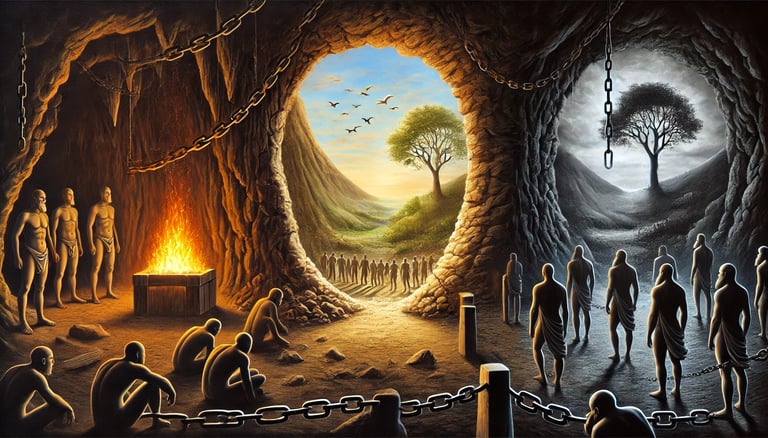

Philosophy of the day - Allegory of the Cave
The "Allegory of the Cave" is a philosophical concept developed by the ancient Greek philosopher Plato. It appears in his work "The Republic" (Book VII). Here’s a brief introduction:
The Allegory:
- Setting: Imagine prisoners chained inside a dark cave since birth. They can only see the cave wall in front of them.
- Shadows: Behind them, there is a fire, and between the fire and the prisoners, there are objects being moved. These objects cast shadows on the cave wall, which the prisoners see and believe to be the only reality.
- Escape: One prisoner is freed and exposed to the outside world. Initially, he is blinded by the sunlight but gradually sees and understands the true forms of objects and the world outside the cave.
- Return: The freed prisoner returns to the cave to free the others, but they resist and ridicule him, preferring the familiar shadows to the unknown reality.
Symbolism:
- Cave: Represents the world of appearances and illusions.
- Shadows: Symbolize perceptions of those who believe empirical evidence is the truth.
- Freed Prisoner: Represents the philosopher who seeks and understands higher knowledge.
- Sunlight: Symbolizes the ultimate truth and knowledge, often associated with the Form of the Good in Plato’s philosophy.
Interpretation:
Plato uses this allegory to discuss the nature of reality, human perception, and the philosopher’s role in society. It emphasizes that the sensory world is only a shadow of the true reality, which can only be understood through philosophical reasoning and intellectual insight.
Would you like more details on any specific part of the allegory?
